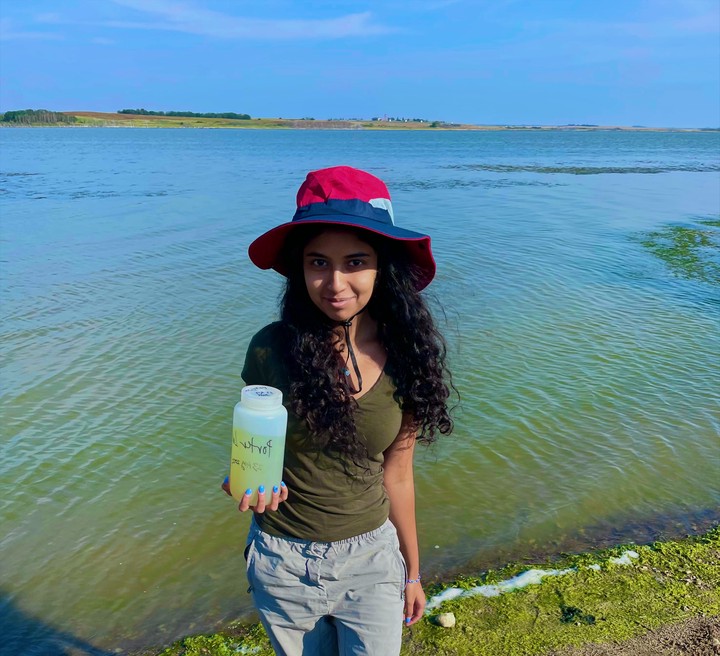Layana Khan (Honours thesis, 2023)
 Layana at a lake in southern Saskatchwean
Layana at a lake in southern Saskatchwean
Project description: Salinity levels in lakes on the Great Plains naturally shift as the region goes through periods of drought and high precipitation. In the coming century, lake salinities are expected to rise as the region experiences prolonged drought. One group of organisms sensitive to changes in salinity are the zooplankton. Previous studies show negative correlations between measures of community structure, such as richness, diversity, and evenness, with salinity. In addition, community composition often shifts away from cladoceran zooplankton to copepods in higher salinity lakes. The objective of my study is to examine differences in zooplankton communities in relation to dissolved ion concentrations in Great Plains lakes. Zooplankton were sampled from eleven lakes surrounding Saskatoon, SK with salinities ranging from 0-20 ‰. Zooplankton were identified to the genus level and common measures of community structure were calculated (richness, diversity, evenness). None of the measures of community structure were correlated with concentrations of dissolved ions. However, lakes with higher salinities had fewer cladocerans and more copepods. My results are surprising given the strong relationships between community structure and salinity found in previous studies. My results may reflect the small number of lakes included in my study, or the limited range of salinities found in my study lakes. Future studies should incorporate a larger sample size and encompass a wider range of salinities.
Associated projects: Can zooplankton keep up with climate-driven salinity change in Great Plains’ lakes?, Can disperal buffer against zooplankton community changes in Great Plains’ lakes?